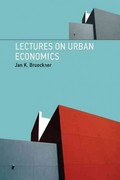Question
Consider the following scenario when answering the following questions: In 2000, researchers Brigitte Madrian and Dennis Shea analyzed the 401(k) savings behavior of employees in
Consider the following scenario when answering the following questions:
In 2000, researchers Brigitte Madrian and Dennis Shea analyzed the 401(k) savings behavior of employees in a large U.S. corporation before and after an interesting change in the company 401(k) plan.
Before the plan change, employees were not automatically enrolled as participants in the company 401(k) plan upon being hired and were required to complete paperwork if they wanted to opt in. After the plan change, new employees were automatically enrolled in the 401(k) plan and were required to complete paperwork if they wanted to opt out. The amount of time and effort required to either opt in or opt out was approximately equal. None of the economic features of the plan changed.
The researchers found that 401(k) participation is significantly higher under automatic enrollment. One possible explanation for this finding is that
a.framing effects have no influence in employee 401(k) participation decisions.
b.there was a large shift in the employees' preferences for savings the day plan changes were implemented.
c.employees will always choose whether to participate based entirely on the economic features of the plan, not the way the decision to participate is framed.
d.employees are acting rationally in the context of standard economic models.
e.framing effects have a significant influence in employee 401(k) participation decisions.
Step by Step Solution
There are 3 Steps involved in it
Step: 1

Get Instant Access to Expert-Tailored Solutions
See step-by-step solutions with expert insights and AI powered tools for academic success
Step: 2

Step: 3

Ace Your Homework with AI
Get the answers you need in no time with our AI-driven, step-by-step assistance
Get Started


